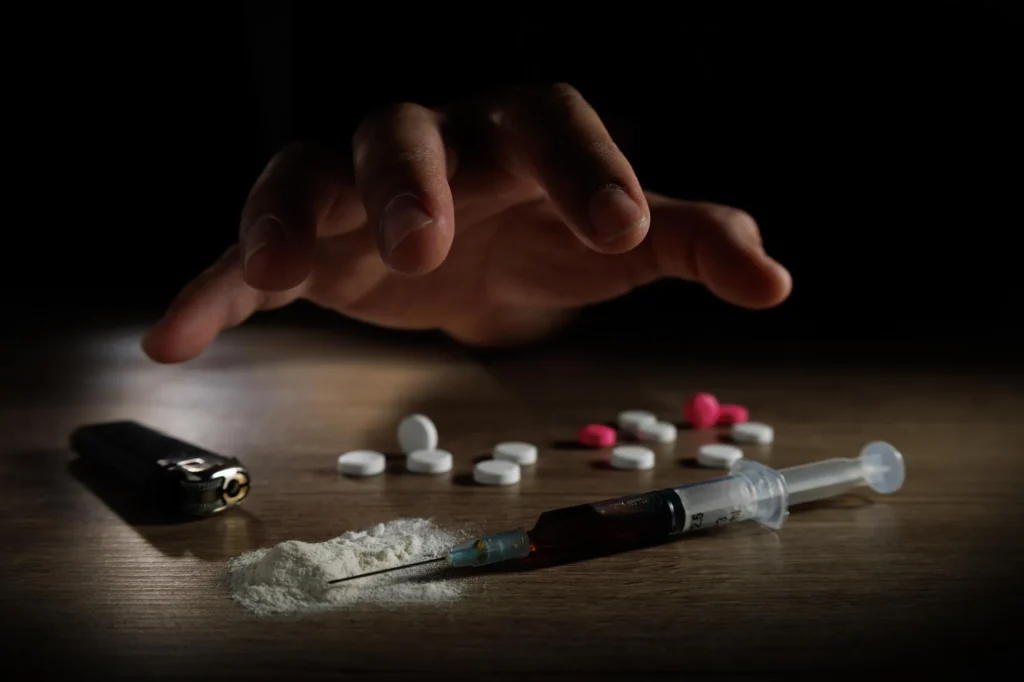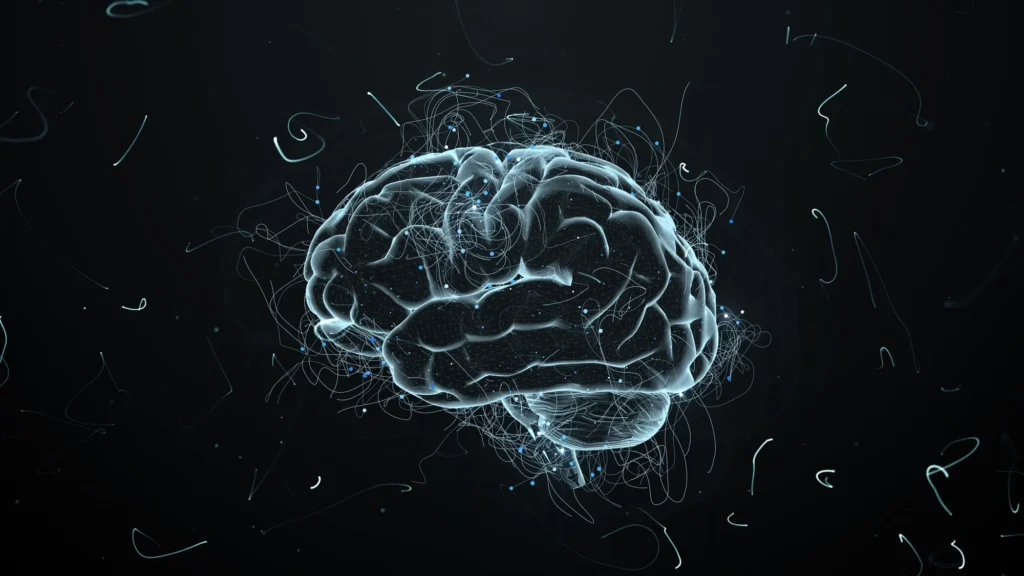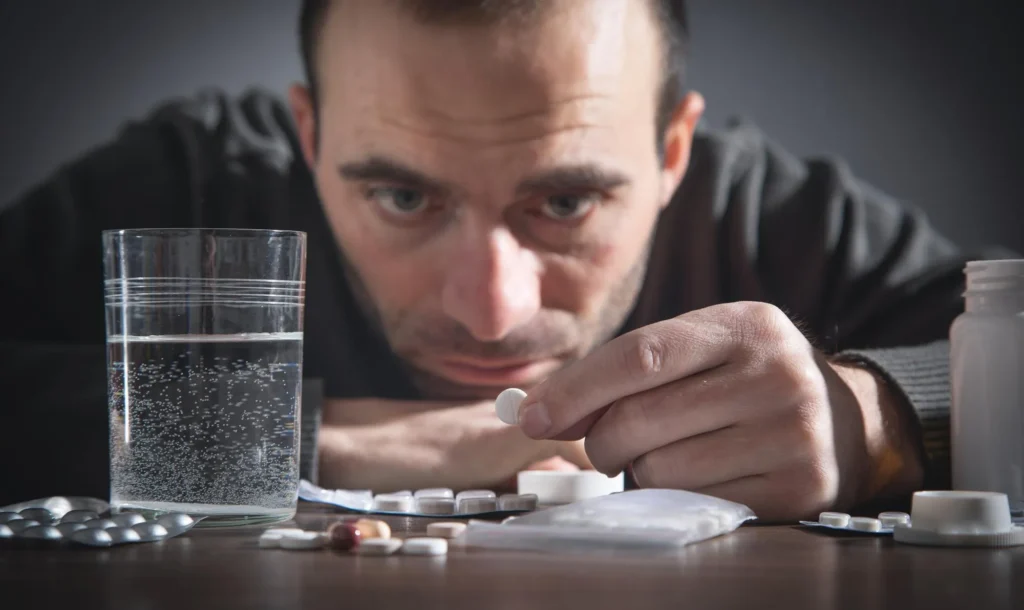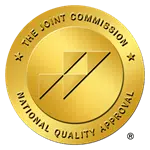Addiction is a complex and multifaceted condition characterized by the compulsive use of substances or engagement in behaviors despite detrimental consequences.
It’s a neurological disorder that affects the brain’s reward, motivation, and memory functions, leading to an overpowering desire to continue using the substance or repeating the behavior.
Understanding addiction is crucial because it’s not just a personal struggle but a pervasive issue that impacts society at large.
It affects individuals’ health, relationships, and productivity, and places a significant burden on healthcare systems and social structures.
Recovery, on the other hand, is the process of overcoming addiction.
It involves not only abstaining from addictive behaviors or substances but also rebuilding and healing one’s life.
Recovery is a journey of transformation that requires patience, support, and often professional intervention.
In this article, we’ll provide a comprehensive guide to both addiction and the path to recovery.
We’ll explore the types of addiction, their causes, signs, and the impact they have on individuals and society.
We’ll also summarize various treatment options, the challenges faced during recovery, and long-term strategies for maintaining sobriety.
My goal is to offer insights and resources for those battling addiction, their loved ones, and anyone interested in this critical subject.

Understanding Addiction
Addiction is a multifaceted and complex phenomenon that can take many forms.
At its core, addiction involves a compulsion to continue using a substance or engaging in a behavior, despite the negative consequences it may bring.
To fully understand addiction, we must examine its various types, the underlying causes, and the science behind it.
Types of Addiction
Substance Addictions
This category includes addiction to alcohol, illegal drugs such as heroin and cocaine, and prescription medications like opioids and benzodiazepines.
Substance addiction is characterized by a physical and psychological dependency on the chosen substance.
The physical aspect is marked by withdrawal symptoms when the substance is not consumed, while the psychological aspect is defined by a strong desire or compulsion to use the substance.
Behavioral Addictions
Unlike substance addiction, behavioral addictions involve a compulsion to engage in non-substance-related behaviors.
Common examples include gambling, internet use, gaming, and even activities like shopping or exercising.
These behaviors produce a “high” or a sense of reward, leading to a pattern of repeated behavior despite negative outcomes.
Causes of Addiction
Understanding addiction also means looking into its roots. Several factors can contribute to the development of an addiction:
Genetic Factors
Genetics plays a significant role in addiction. Studies suggest that genetics account for about half of the likelihood that someone will develop an addiction.
This genetic predisposition can influence how a person reacts to a substance or behavior and can affect their susceptibility to addiction.
Environmental Influences
A person’s environment can significantly impact their likelihood of developing an addiction.
Factors such as the following can all influence the development of addictive behaviors:
- Exposure to drugs or alcohol at a young age
- Peer pressure
- Family dynamics
- Socioeconomic status
- Exposure to stress or trauma
Psychological Factors
Various psychological factors are known to contribute to addiction.
These include mental health disorders such as depression, anxiety, and bipolar disorder.
Additionally, individuals with a history of trauma or those with difficulty handling stress may also be more prone to addiction.
The Science of Addiction
To fully grasp the nature of addiction, it’s important to understand the science behind it:
Brain Chemistry and Addiction
Addiction affects the brain’s reward system.
The introduction of addictive substances or behaviors triggers the release of neurotransmitters like dopamine, creating a feeling of pleasure or euphoria.
Over time, the brain’s chemistry and structure can change, leading to an altered response to these rewards and a decreased ability to feel pleasure from other activities.
The Role of Neurotransmitters
Dopamine is a key neurotransmitter in addiction.
It’s responsible for the feeling of pleasure and reinforcement, motivating continued use of the substance or behavior.
However, with repeated exposure, the brain starts to produce less dopamine or reduces the number of receptors that can receive it.
This reduction leads to a decreased sense of satisfaction from the addictive substance or behavior and often other activities that previously brought pleasure.
It pushes the individual to seek out the addictive substance or behavior more frequently and in larger quantities to achieve the same “high.”
Understanding addiction requires a compassionate yet analytical approach.
Recognizing that it is a disease involving complex interplays between genetics, environment, and brain chemistry is crucial.
It is not a matter of willpower or moral failing.
Individuals struggling with addiction often require professional help and support to overcome their addiction.
By understanding the various aspects of addiction, we can better support those who are dealing with it and contribute to more effective treatment and prevention strategies.
By examining the science of addiction, particularly the role of brain chemistry and neurotransmitters, we gain a deeper understanding of why addiction is so powerful and challenging to overcome.
This knowledge is essential in fostering empathy and developing more effective treatment approaches, ultimately leading to better support for those affected by addiction.

Recognizing the Signs of Addiction
Addiction, whether to substances or behaviors, leaves a distinct footprint on an individual’s physical health, behavior, and emotional well-being.
Recognizing these signs is crucial in identifying addiction early and seeking appropriate help.
These signs can be broadly categorized into physical, behavioral, and emotional symptoms.
Physical Signs
Physical signs of addiction are often the most noticeable and can vary depending on the substance or behavior involved:
Changes in Appearance: This can include sudden weight loss or gain, poor skin condition, unkempt hair, and a general decline in personal grooming habits.
Eyes and Skin Changes: Bloodshot or glazed eyes, unusually large or small pupils, and skin changes, such as acne or a sallow complexion, are common physical indicators of substance abuse.
Sleep Disturbances: Addicts often experience insomnia or, conversely, excessive sleepiness. The quality and pattern of sleep can be severely disrupted.
Altered Energy Levels: This might manifest as hyperactivity or, conversely, unusual lethargy. These changes are often directly related to substance use or withdrawal.
Health Issues: Frequent nosebleeds (especially in cocaine users), track marks on arms or legs, persistent cough (smokers), and unexplained seizures or headaches can all be indicative of addiction.
Withdrawal Symptoms: Symptoms like shaking, sweating, nausea, vomiting, and headaches when unable to use the substance are telltale signs of physical dependency.
Behavioral Changes
Behavioral changes are key indicators of addiction and can often be the first sign that something is amiss:
Secrecy and Deception: This includes lying about whereabouts, activities, or the amount of substance used. The person may become secretive, evasive, and deceptive about their behavior.
Change in Social Circles: A noticeable shift in the individual’s social group, especially if the new friends are known to use substances or engage in addictive behavior.
Neglecting Responsibilities: This might include poor performance at work or school, neglecting household chores, or failing to meet family obligations.
Financial Issues: Sudden and unexplained financial problems, borrowing or stealing money, or spending large amounts on substances can be a sign of addiction.
Increased Risk-Taking: Engaging in risky behaviors, like driving under the influence, using dirty needles, or risky sexual behavior, are common in individuals struggling with addiction.
Loss of Interest: Abandoning hobbies or activities that were once enjoyable, or showing a lack of interest in social or recreational activities.
Tolerance and Withdrawal: Needing more of the substance to achieve the same effect (tolerance) or experiencing negative symptoms when not using the substance (withdrawal) are key behavioral indicators of addiction.
Emotional Symptoms
Emotional symptoms of addiction can be varied and sometimes subtle:
Mood Swings: Rapid and unexplained changes in mood, from euphoria to depression, can indicate a dependency on substances or behaviors that alter mood.
Irritability and Agitation: Becoming easily frustrated or agitated, especially when unable to engage in addictive behavior or substance use.
Anxiety and Paranoia: High levels of anxiety, fear, or paranoia, particularly to obtaining or using the substance.
Depression: Persistent sadness, loss of motivation, and a feeling of hopelessness can be both a cause and a symptom of addiction.
Denial: Refusal to acknowledge the problem or its severity is a common emotional response in addiction.
Lack of Motivation: A general sense of apathy or lack of interest in setting and achieving goals.
Feelings of Guilt: The individual may express guilt or shame about their behavior but feel powerless to stop.
Recognizing these signs in oneself or a loved one can be challenging and emotionally fraught.
However, acknowledgment of these symptoms is the first step towards seeking help.
It’s important to remember that addiction is a disease, and like any other medical condition, it requires professional treatment.
Early intervention can significantly improve the chances of successful recovery.
Addiction manifests in various ways, affecting an individual’s physical health, behavior, and emotional state.
Physical signs can range from changes in appearance to specific health issues, while behavioral changes often involve a noticeable alteration in lifestyle, social interactions, and daily functioning.
Emotional symptoms, though sometimes less obvious, are equally crucial in understanding the full impact of addiction.
These symptoms are interlinked, each affecting and reinforcing the other.
Recognizing these signs is a critical step in addressing the issue of addiction, providing the foundation for seeking help and beginning the journey toward recovery.

The Impact of Addiction
Addiction, a complex and chronic brain disease, has far-reaching effects that go beyond the individual to touch families, communities, and society at large.
Understanding the full impact of addiction is crucial for developing effective treatment strategies and support systems.
Impact on the Individual
Health Consequences: Addiction can lead to a myriad of health problems, both physical and mental.
Physical health issues might include liver disease (from alcohol abuse), lung or cardiovascular disease (from smoking), HIV/AIDS, and hepatitis (from needle sharing).
Mental health issues can include an increased risk of depression, anxiety, and other psychiatric disorders.
The risk of overdose and death is also a significant concern, especially with opioid addiction.
Relationships: Addiction strains relationships with family, friends, and colleagues.
The behaviors associated with addiction, like lying, stealing, and erratic behavior, erode trust and create a tense and often hostile environment.
This can lead to isolation, divorce, and loss of custody of children.
Work and Financial Impact: Addiction often leads to decreased productivity, absenteeism, and even job loss.
These work-related issues, combined with the cost of acquiring the substance, can lead to significant financial strain, debt, and even homelessness.
Impact on Families and Loved Ones
Emotional and Psychological Toll: Families experience a range of emotions including guilt, shame, fear, anger, and confusion.
The unpredictability of the addict’s behavior can create a constant state of anxiety and stress for family members.
Physical and Financial Strain: Families may face financial difficulties due to the addict’s spending on substances or due to legal troubles.
They may also experience physical health problems due to stress or violence.
Enabling Behaviors: Families often unknowingly enable the addict’s behavior in an attempt to help.
This enabling can take the form of covering up the addiction, taking over responsibilities, or providing financial support.
Impact on Children: Children in families with addiction may experience neglect, abuse, or emotional trauma.
These experiences can have long-lasting effects, including an increased risk of developing an addiction themselves.
Social and Economic Impacts
Healthcare Costs: Addiction significantly burdens the healthcare system.
It leads to higher rates of hospital admissions, increased need for treatment programs, and a greater risk of infectious diseases, which all contribute to rising healthcare costs.
Criminal Justice System: There is a strong link between addiction and criminal behavior.
The need to support a drug habit can lead to criminal activities like theft and drug dealing.
Additionally, substance use is often involved in other crimes, including DUIs and violent offenses. This results in increased policing, legal, and incarceration costs.
Workplace Productivity: Addiction affects the workforce through lost productivity, absenteeism, workplace accidents, and increased insurance costs.
This can result in a significant economic impact on businesses.
Public Safety and Welfare: Addiction contributes to broader societal issues such as homelessness, child neglect and abuse, and strain on social welfare systems.
The impact of addiction is extensive and multi-faceted, affecting the individual, their family, and society at large.
The health consequences for the individual can be dire, encompassing both physical and mental health issues.
Relationships are strained, often leading to isolation, and the economic burden on the individual and their family can be substantial.
Beyond the immediate family, addiction also has a significant impact on society, manifesting in higher healthcare costs, increased crime rates, and reduced productivity in the workforce.
Understanding these impacts is crucial for developing comprehensive strategies to address addiction, including effective treatment and support systems, as well as public policy initiatives aimed at prevention and early intervention.

Stages of Addiction
Addiction is a progressive disease that typically evolves through several stages.
Understanding these stages can help in recognizing the signs of addiction early and seeking timely intervention.
There are five key stages of addiction: experimentation, regular use, risky use/abuse, dependence, and addiction.
1. Experimentation
Experimentation is the initial stage of substance use or behavior. It is often motivated by curiosity, peer pressure, or a desire to escape stress.
During this stage, individuals are trying the substance or behavior for the first time and may not yet feel a compulsion to continue it.
The frequency and quantity are usually limited, and the individual can easily stop without experiencing withdrawal symptoms.
In some cases, experimentation does not progress to regular use, but for others, it can be the first step on the path to addiction.
2. Regular Use
The transition from experimentation to regular use marks a change in the individual’s pattern of behavior or substance use.
The use becomes more consistent, and the individual may start using the substance or engaging in the behavior as a way to cope with stress, to socialize, or for pleasure.
During this stage, they may still maintain control over their use, and it might not yet disrupt their daily life.
However, the increased frequency raises the risk of progressing to the next stage of addiction.
3. Risky Use/Abuse
Risky use or abuse is characterized by the substance or behavior beginning to harm the individual’s life.
This stage involves a pattern of use that is harmful or dangerous. It might manifest as driving under the influence, using substances in unsafe environments, or neglecting responsibilities.
The individual may start experiencing legal problems, relationship issues, or work-related difficulties due to their use.
Despite these problems, the individual continues to use or engage in the behavior, often to avoid withdrawal symptoms or because they feel they cannot cope without it.
4. Dependence
Dependence is a significant stage in the addiction process. It can be physical, psychological, or both.
Physical dependence occurs when the body adapts to the substance and begins to require it to function normally.
Withdrawal symptoms become evident when the substance is not used.
Psychological dependence involves a perceived need for a substance or behavior to cope with life, manage stress, or feel pleasure.
At this stage, the individual spends more time obtaining, using, and recovering from the effects of the substance or behavior.
5. Addiction
Addiction is the final and most severe stage. It is characterized by a loss of control over the use of the substance or engagement in the behavior.
The individual continues to use or engage despite significant health issues, psychological problems, and disruptions to their personal, social, and professional life.
Addiction involves intense cravings and a failure to meet obligations and responsibilities.
The individual may want to quit but finds it extremely difficult to do so without professional help. Their life revolves around the addiction, often leading to isolation from family and friends.
Each stage of addiction has its own set of challenges and requires a different approach in terms of intervention and treatment.
Early intervention, ideally during the experimentation or regular use stages, can prevent the progression to full-blown addiction.
Recognizing the signs at each stage is critical for the individual, loved ones, and healthcare professionals.
The stages of addiction describe a progressive journey from initial experimentation to full addiction.
This progression involves an increasing intensity of use and a growing impact on the individual’s physical health, mental well-being, and social life.
Understanding these stages is crucial for early detection, intervention, and effective treatment.
It is important to remember that addiction is a complex disease, and transitioning from one stage to the next is not always linear and can vary significantly from person to person.
Effective treatment must be tailored to the individual’s specific needs and stage of addiction, and should include a comprehensive approach that addresses the physical, psychological, and social aspects of the disorder.

Intervention and Seeking Help
Recognizing the need for help and knowing how to intervene in a situation of addiction are critical steps in the journey toward recovery.
Whether you are dealing with your addiction or concerned about a loved one, understanding how to approach this sensitive topic and where to find help can make a significant difference.
Recognizing the Need for Help
The first step in seeking help is recognizing that there is a problem.
For individuals struggling with addiction, this can be particularly challenging due to denial, a common symptom of addiction.
Acknowledging the issue requires honesty and often comes after facing the adverse consequences of their behavior, such as health problems, strained relationships, or legal issues.
For friends and family members, recognizing the need for help often involves noticing changes in the individual’s behavior, mood, and physical appearance.
These changes might include neglect of responsibilities, withdrawal from social activities, financial problems, or physical health issues.
How to Approach Someone About Their Addiction
Approaching someone about their addiction requires sensitivity, compassion, and understanding. Here are some guidelines:
Choose the Right Time and Place: Find a quiet, private setting where you can talk without interruptions. Ensure the person is sober and in a state of mind to have a serious conversation.
Express Concern, Not Judgment: Use “I” statements to express your concerns. For example, “I feel worried about your health when I see you drinking so much.” Avoid accusations or judgmental language, as this can lead to defensiveness.
Be Prepared for Resistance: Denial and resistance are common in individuals facing addiction. They might minimize the problem or become angry. Stay calm and focused on your concern for their well-being.
Offer Support: Let them know you are there to support them and that their well-being is important to you. Offer to help them find professional assistance.
Listen: Be a good listener. Allow them to share their feelings and experiences without interrupting or offering solutions immediately.
Resources for Getting Help
Hotlines: There are various national and local hotlines available that provide confidential advice and support.
These hotlines can be the first point of contact for individuals seeking help or advice about addiction.
Support Groups: Groups like Alcoholics Anonymous (AA) or Narcotics Anonymous (NA) offer peer support for individuals struggling with addiction.
These groups follow specific programs, such as the 12-step program, and provide a community of individuals who share their experiences and support each other.
Professional Counseling: Addiction counselors or therapists specialize in treating individuals with addiction.
They can offer individual or group therapy and help develop a treatment plan.
Rehabilitation Centers: These facilities provide comprehensive treatment programs, including detoxification, counseling, and aftercare planning.
Some offer inpatient care, while others may offer outpatient treatment programs.
Medical Doctors: A primary care physician can offer medical advice, screen for health issues related to addiction, and refer patients to specialists.
Online Resources: Numerous websites and online forums offer information, support, and guidance for individuals dealing with addiction and their families.
Recognizing the need for help and knowing how to approach someone about their addiction are essential steps in addressing the issue.
Whether you are dealing with your addiction or are concerned about a loved one, it’s important to approach the situation with compassion and understanding.
Numerous resources are available, from hotlines and support groups to professional counseling and rehabilitation centers.
Seeking help is a sign of strength, and it’s the first step towards recovery and a healthier future.

Treatment Options for Addiction
Addiction is a complex disease, but it is treatable.
The journey to recovery often involves a combination of treatments and approaches tailored to the individual’s needs.
Understanding the various treatment options is crucial for anyone seeking help for themselves or a loved one.
Detoxification
Detoxification, or detox, is the first step in treating addiction, especially for those addicted to substances.
This process involves eliminating the addictive substance from the body and managing withdrawal symptoms.
Withdrawal can be physically and emotionally challenging and, in some cases, life-threatening.
Therefore, detoxification should be conducted under medical supervision, either in a hospital or a rehab center, where medications can be used to ease withdrawal symptoms.
Rehabilitation Programs
Rehabilitation programs are designed to help individuals understand their addiction, learn coping strategies, and develop a lifestyle that supports recovery. These programs can be:
Inpatient Rehabilitation
Inpatient rehab, also known as residential drug rehab, offers an immersive and intensive treatment experience in a supportive residential setting, designed to foster a focused path to recovery
The individual lives at the facility and receives round-the-clock care.
These programs, which typically last for 30 to 90 days, are suited for those with severe addictions or co-occurring mental health disorders.
They offer a structured environment free from distractions and temptations of everyday life.
Outpatient Rehabilitation
Outpatient rehab allows individuals to live at home while receiving treatment.
This can range from several hours a week to almost daily sessions.
Outpatient programs are often best for those with less severe addictions or as a step down from inpatient treatment.
They enable individuals to continue with work or school and apply learned strategies in real-world settings.

Therapy and Counseling
Therapy is a cornerstone of addiction treatment, addressing the psychological aspects of addiction.
Cognitive Behavioral Therapy (CBT)
CBT is a widely used therapy that helps individuals identify and change negative thought patterns and behaviors related to addiction.
It focuses on developing coping strategies to manage triggers and prevent relapse.
Group Therapy
Group therapy provides a supportive environment where individuals can share experiences and learn from others. It helps in building social skills and reduces feelings of isolation.
Medication-Assisted Treatment
Medication-assisted treatment (MAT) combines medications with counseling and behavioral therapies. It is mainly used for opioid and alcohol addiction.
Medications, such as methadone, buprenorphine, and naltrexone, are used to manage withdrawal symptoms, reduce cravings, and normalize body functions.
MAT is a highly effective treatment and can significantly reduce the risk of relapse.
Holistic and Alternative Therapies
Holistic therapies focus on healing the mind, body, and spirit. These may include:
Yoga and Meditation: These practices help reduce stress and improve mental clarity, self-awareness, and emotional stability.
Acupuncture: Some evidence suggests acupuncture can help alleviate withdrawal symptoms and reduce cravings.
Nutritional Therapy: Proper nutrition supports recovery by restoring physical health and improving mood.
Art and Music Therapy: These therapies provide outlets for expression and can be particularly beneficial in exploring emotions and reducing stress.
Exercise: Regular physical activity boosts mood, improves overall health, and reduces stress, all of which are important for recovery.
Mindfulness-Based Interventions: These approaches teach individuals to focus on the present moment and develop an awareness of their thoughts and feelings without judgment.
Choosing the Right Treatment
Choosing the right treatment involves considering several factors, including:
- The severity of the addiction
- The substance or behavior involved
- The individual’s physical and mental health
- Their personal preferences.
It’s important to consult with healthcare professionals to determine the most appropriate treatment plan.
Summary
The road to recovery from addiction is often long and challenging, but with the right treatment plan, recovery is possible.
Whether it’s through medical detox, rehabilitation programs, therapy, or a combination of these, each step is crucial in overcoming addiction.
Holistic and alternative therapies can complement traditional treatments, offering a more comprehensive approach to healing.
Remember, the journey to recovery is unique for each individual, and what works for one person may not work for another.
The most important step is to seek help and start on the path to recovery.

Challenges in Recovery
Recovery from addiction is a journey fraught with challenges, some of which are withdrawal symptoms, the risk of relapse, and managing triggers and cravings.
Understanding these challenges is vital for individuals in recovery and their support networks.
Withdrawal Symptoms
Withdrawal is a direct consequence of physical dependence on a substance.
When an individual stops using the substance, the body, having become accustomed to its presence, begins to react.
These reactions, or withdrawal symptoms, can vary in intensity depending on the substance, the duration of addiction, and the individual’s overall health. Common symptoms include:
Physical Symptoms: These can range from:
- Headaches
- Nausea
- Vomiting
- Sweating
- Shakiness
- Extreme fatigue
to more severe symptoms such as seizures or delirium tremens (DTs) in the case of alcohol withdrawal.
Psychological Symptoms: Anxiety, irritability, depression, and insomnia are common.
In some cases, individuals may experience intense cravings, hallucinations, or paranoia.
The severity of withdrawal symptoms often leads individuals to relapse. Medical supervision during detox can help manage these symptoms safely.
Relapse: Causes and Prevention
Relapse is a common part of the recovery journey, but it’s not a sign of failure. It’s important to understand its causes and how to prevent it:
Causes of Relapse
Common triggers include stress, exposure to the substance or environment associated with past use, social pressures, and unresolved mental health issues. Sometimes, overconfidence in one’s ability to control use or a lack of support can also lead to relapse.
Prevention Strategies
Key strategies include ongoing therapy, support group participation, developing healthy coping mechanisms, and lifestyle changes. Creating a relapse prevention plan, identifying personal triggers, and having a support system in place are crucial.
Importance of a Support Network
A strong support network of family, friends, and peer support groups is vital. These networks provide emotional support, understanding, and accountability.
Continued Care
Recovery is an ongoing process. Continued care, whether in the form of regular therapy sessions, support group meetings, or check-ins with a healthcare provider, is essential to maintain sobriety.
Managing Triggers and Cravings
Triggers and cravings are inevitable in recovery. They can be external, like places, people, or situations associated with the addiction, or internal, such as emotions or thoughts.
Identifying Triggers
The first step in managing triggers is to identify them. Keeping a journal or working with a therapist can help recognize patterns that lead to cravings.
Developing Coping Strategies
Strategies might include avoiding certain triggers, practicing stress-reduction techniques like meditation or exercise, and using cognitive-behavioral techniques to challenge and change thoughts that lead to cravings.
Mindfulness and Cravings
Mindfulness practices can help individuals observe cravings without acting on them. Recognizing that cravings are temporary and will pass can be empowering.
Building a Healthy Lifestyle
A healthy lifestyle, including regular exercise, a balanced diet, sufficient sleep, and engaging in hobbies, can reduce the frequency and intensity of cravings.
Recovery from addiction is a challenging journey, and understanding the potential hurdles is key to navigating it successfully.
Withdrawal symptoms can be physically and emotionally taxing, but with the right medical support, they can be managed safely.
Relapse is a common part of the recovery process, and understanding its causes and having a prevention plan can help in maintaining long-term sobriety.
Managing triggers and cravings is an ongoing challenge, but with the right strategies and support, individuals can learn to cope with them effectively.
Remember, recovery is a journey, not a destination, and each challenge overcome is a step towards a healthier, substance-free life.

Long-Term Recovery and Support
Long-term recovery from addiction is a continuous process that extends well beyond the initial treatment phase.
It involves making sustainable lifestyle changes, building a robust support system, and engaging in ongoing therapy and support groups.
This journey, while challenging, is filled with stories of resilience and success.
Lifestyle Changes for Recovery
Health and Wellness
Adopting a healthy lifestyle is critical in long-term recovery. This includes regular physical activity, a nutritious diet, and adequate sleep. Exercise, in particular, releases endorphins, improves mood, and reduces stress, all of which are essential in combating cravings and maintaining sobriety.
Mindfulness and Stress Management
Practices like meditation, yoga, and mindfulness can significantly reduce stress and anxiety, common triggers for relapse. These practices also enhance self-awareness and emotional regulation, aiding in recovery.
Healthy Relationships
Developing and maintaining healthy relationships is crucial. This means distancing oneself from peers who use substances and fostering relationships with those who support your recovery journey.
Structured Routine
A structured daily and weekly routine provides stability and predictability, reducing the risk of relapse. This includes regular meal times, exercise, work, and leisure activities.
Sober Hobbies and Interests
Engaging in hobbies and activities that do not involve substances provides a sense of joy and fulfillment. Whether it’s art, music, sports, or volunteer work, these activities offer meaningful ways to spend time and build a sense of accomplishment.
Building a Support System
Family and Friends
The role of family and friends in recovery cannot be overstated. Educating them about addiction and recovery helps in building understanding and empathy. Family therapy can be an effective way to repair relationships damaged by addiction and build a stronger support network.
Peer Support Groups
Groups like Alcoholics Anonymous (AA) or Narcotics Anonymous (NA) provide a sense of community and understanding. These groups offer a platform to share experiences and learn from others who are on similar paths.
Professional Support
Continuing to see a therapist or counselor can provide ongoing support and guidance. They can help navigate the challenges of recovery and offer strategies to maintain sobriety.
Sober Living Environments
For some, sober living homes offer a supportive transitional environment to reinforce recovery lessons and prepare for a return to everyday life.
Importance of Ongoing Therapy and Support Groups
Relapse Prevention
Ongoing therapy and support groups play a key role in relapse prevention. They provide a space to discuss challenges, triggers, and strategies to maintain sobriety.
Emotional Support
Recovery can be emotionally taxing. Regular therapy sessions and support group meetings provide a safe space to express emotions and receive support.
Accountability
Being part of a therapy group or attending regular counseling sessions creates a sense of accountability, which is crucial in maintaining long-term recovery.
Success Stories and Positive Outcomes
Recovery is not only about overcoming addiction; it’s about rebuilding a life.
Success stories of individuals who have triumphed over addiction serve as powerful testimonies to the effectiveness of long-term recovery strategies.
Personal Growth
Many in recovery find that they develop a deeper understanding of themselves. They often discover new interests, develop new skills, and improve their relationships.
Improved Health
Long-term recovery leads to significant improvements in physical and mental health. Individuals often report better sleep, more energy, and an overall increase in well-being.
Career Advancement
With sobriety, many find that their work performance improves, leading to new opportunities and career advancement.
Positive Relationships
Recovery allows for the healing and strengthening of relationships with family and friends, fostering a healthier and more supportive social life.
Community Involvement
Many individuals in recovery find fulfillment in helping others who are struggling with addiction. This can include participating in peer support groups, volunteering, or even pursuing a career in addiction counseling.
Long-term recovery from addiction is a lifelong journey of growth and self-improvement.
It involves making significant lifestyle changes, building a supportive network, and engaging in ongoing therapy and support groups.
While the path is not always easy, it is filled with stories of success and resilience. These stories serve as reminders that recovery is possible and that with the right support and strategies, individuals can lead fulfilling, substance-free lives.

Prevention and Education in Addiction
Prevention and education are crucial elements in the fight against addiction.
By implementing effective strategies, educating the public, and involving key institutions like schools and healthcare providers, communities can significantly reduce the incidence and impact of addiction.
Strategies for Addiction Prevention
Early Intervention
Early intervention, particularly during childhood and adolescence, is crucial.
Teaching children and teenagers about the risks of substance abuse and helping them develop healthy coping strategies for stress and peer pressure can prevent the onset of addiction.
Promoting Healthy Activities
Encouraging participation in sports, arts, and community activities provides young people with positive and healthy ways to connect with others, develop skills, and gain self-esteem, reducing the likelihood of turning to substances.
Parental Involvement and Education
Educating parents about the signs of addiction and the importance of open communication with their children is essential.
Parents who are informed and engaged can effectively guide their children away from substance abuse.
Educating the Public and Raising Awareness
Awareness Campaigns
Public awareness campaigns can educate the wider community about the dangers of addiction, how to recognize the signs, and where to seek help.
These campaigns can be especially effective when they include personal stories of addiction and recovery.
Media and Online Resources
Utilizing media and online platforms to spread information about addiction, treatment options, and success stories can reach a broad audience.
Social media campaigns, websites, and educational videos can be powerful tools for raising awareness.
Destigmatizing Addiction
Education should also focus on destigmatizing addiction. Understanding addiction as a medical condition rather than a moral failing can encourage more people to seek help.
Role of Schools
Educational Programs
Incorporating drug education into the school curriculum can provide students with factual information about the effects of drugs and alcohol.
Role-playing and interactive activities can be particularly effective in engaging students.
Counseling and Support Services
Schools should have counselors trained to recognize signs of substance abuse and to provide support or referrals to appropriate services.
Peer counseling programs can also be beneficial.
Safe and Supportive Environment
Creating a safe and supportive environment in schools can help students feel more comfortable discussing issues related to substance abuse and seeking help if needed.
Communities Involvement
Community Programs
Community-based programs, such as after-school activities, mentorship programs, and support groups, can provide support and guidance to individuals, particularly youths, who may be at risk of substance abuse.
Access to Resources
Ensuring that community members have easy access to information and resources related to addiction prevention, treatment, and recovery is vital.
This includes having community centers, libraries, and local health clinics stocked with relevant and up-to-date information.
Role of Healthcare Providers
Screening and Brief Interventions
Healthcare providers can play a crucial role by regularly screening for substance use during routine healthcare visits and offering brief interventions when necessary.
Educating Patients
Providers should educate patients about the risks associated with prescription medication, particularly opioids, and discuss alternative pain management strategies.
Referral to Treatment
Healthcare providers should be knowledgeable about addiction treatment options and ready to refer patients to appropriate services when necessary.
Prevention and education are key strategies in the battle against addiction.
By addressing the issue early, educating the public, involving schools and communities, and leveraging the role of healthcare providers, we can create a more informed society that is better equipped to prevent and address addiction.
This holistic approach is essential for reducing the prevalence of addiction and mitigating its impact on individuals and communities.

Key Takeaways
- Addiction involves a compulsion to continue using a substance or engaging in a behavior, despite the negative consequences it may bring.
- Understanding addiction also means looking into its roots. Several factors can contribute to the development of an addiction:
- To fully grasp the nature of addiction, it’s important to understand the science behind it.
- The signs of addiction can be broadly categorized into physical, behavioral, and emotional symptoms.
- Recognizing these signs is a critical step in addressing the issue of addiction, providing the foundation for seeking help and beginning the journey toward recovery.
- Understanding the full impact of addiction on the individual, families, and society is crucial for developing effective treatment strategies and support systems.
- There are five key stages of addiction: experimentation, regular use, risky use/abuse, dependence, and addiction.
- Recognizing the need for help and knowing how to intervene in a situation of addiction are critical steps in the journey toward recovery.
- Recovery from addiction is a journey fraught with challenges, some of which are withdrawal symptoms, the risk of relapse, and managing triggers and cravings.
- Long-term recovery from addiction is a continuous process that extends well beyond the initial treatment phase.
- Success stories of individuals who have triumphed over addiction serve as powerful testimonies to the effectiveness of long-term recovery strategies.
- Prevention and education are crucial elements in the fight against addiction.

Sources
Websites:
Substance Abuse and Mental Health Services Administration (SAMHSA) – samhsa.gov
- A government agency that provides information on substance use and mental health disorders, treatment options, and resources for recovery
National Institute on Drug Abuse (NIDA) – drugabuse.gov
- Offers extensive information on different types of addiction, the science of addiction, and the latest research in the field.
Alcoholics Anonymous (AA) – aa.org
- The official site for AA provides information on the program, literature, and a tool to find local AA meetings.
Narcotics Anonymous (NA) – na.org
- Similar to AA but focused on narcotics; the site offers resources and information on finding local meetings.
MentalHealth.gov – mentalhealth.gov
- An all-encompassing resource for understanding mental health disorders, including addiction, with links to services and tools.
Books:
“The Addictive Brain” by Michael Kuhar
- Provides a comprehensive overview of addiction science, explaining how and why addiction happens.
“Clean: Overcoming Addiction and Ending America’s Greatest Tragedy” by David Sheff
- This book offers insight into the nature of addiction and critiques the state of substance abuse treatment in America.
“In the Realm of Hungry Ghosts: Close Encounters with Addiction” by Dr. Gabor Maté
- Dr. Maté combines personal stories with scientific research to explore addiction and its roots.
“Recovery: Freedom from Our Addictions” by Russell Brand
- A memoir and self-help book that provides a fresh look at the process of recovery, written by someone who has experienced it firsthand.
“Unbroken Brain: A Revolutionary New Way of Understanding Addiction” by Maia Szalavitz
- This book challenges traditional notions about addiction and argues that it should be treated as a learning disorder.
“Beautiful Boy: A Father’s Journey Through His Son’s Addiction” by David Sheff
- A memoir by a father detailing his son’s struggle with addiction provides a personal perspective on the impact of addiction on families.


















